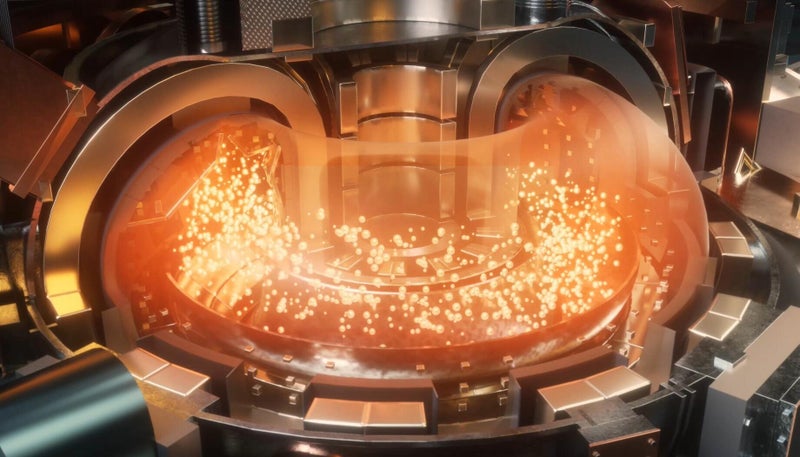Nuclear fusion breakthrough: China's 'artificial sun' reactor sets a new world record by generating a steady loop of plasma for 1,066 seconds - taking the world closer towards limitless clean energy
Share:
If we want to rely on nuclear fusion to power the world's homes, the first step is making reactors that can run as hot and as long as possible. Now, China's 'artificial sun' reactor – officially called 'Experimental Advanced Superconducting Tokamak' (EAST) – has set a new world record, bringing the goal of limitless clean energy ever closer.
![[If nuclear fusion experiments can be harnessed on a much larger scale, reactors hotter than anything else in the solar system will provide limitless clean energy. Tokamak Energy is a private company based at the Culham Centre for Fusion Energy in Oxfordshire]](https://i.dailymail.co.uk/1s/2025/01/22/11/53966195-14312163-If_nuclear_fusion_experiments_can_be_harnessed_on_a_much_larger_-a-63_1737545200039.jpg)
The reactor, located in Hefei in Anhui province, generated a steady loop of plasma for 1,066 seconds at 180million°F (100million°C) – seven times hotter than the sun's core. It surpasses the previous world record of 403 seconds, also set by EAST in 2023.
![[China's self-designed 'artificial sun' - a device to harness the energy of fusion, has made an important advance by achieving a temperature of 180 million °F (100 million °C) in plasma]](https://i.dailymail.co.uk/1s/2025/01/22/09/94381383-14312163-China_s_self_designed_artificial_sun_a_device_to_harness_the_ene-m-44_1737539166242.jpg)
EAST could be a precursor to the first ever fusion power plants that supply power directly to the grid and electricity to people's homes. These power plants could reduce greenhouse gas emissions from the power-generation sector by diverting away from the use of fossil fuels like coal and gas.
![[This photo shows the control center of the Experimental Advanced Superconducting Tokamak (EAST) in Hefei, east China's Anhui Province, January 20, 2025]](https://i.dailymail.co.uk/1s/2025/01/22/09/94381399-14312163-This_photo_shows_the_control_center_of_the_Experimental_Advanced-m-43_1737539054537.jpg)
Fusion differs from fission (the technique currently used in nuclear power plants), because the former fuses two atomic nuclei instead of splitting one (fission). Unlike fission, fusion carries no risk of catastrophic nuclear accidents – like that seen in Fukushima in Japan in 2011 – and produces far less radioactive waste than current power plants, its exponents say.
![[A staff member performs an upgrade to the experimental advanced superconducting tokamak (EAST) at the Hefei Institutes of Physical Science under the Chinese Academy of Sciences (CAS) on April 28, 2021]](https://i.dailymail.co.uk/1s/2025/01/22/09/94381385-14312163-image-m-46_1737539649560.jpg)
China's 'artificial sun' reactor - officially called 'Experimental Advanced Superconducting Tokamak' (EAST) - has set a new world record, bringing the goal of limitless clean energy ever closer. The reactor, located in Hefei in Anhui province, generated a steady loop of plasma for 1,066 seconds at 180million°F (100million°C) - seven times hotter than the sun's core.
![[At the heart of EAST and other fusion reactors around the world is the tokamak, a doughnut-shaped device initially conceptualised in the 1950s by Soviet physicists. Inside, under the influence of extreme heat and pressure, gaseous hydrogen fuel becomes a plasma – a hot, electrically charged gas]](https://i.dailymail.co.uk/1s/2025/01/22/11/94381413-14312163-At_the_heart_of_EAST_and_other_fusion_reactors_around_the_world_-a-8_1737545370579.jpg)





















